Your cart is currently empty!
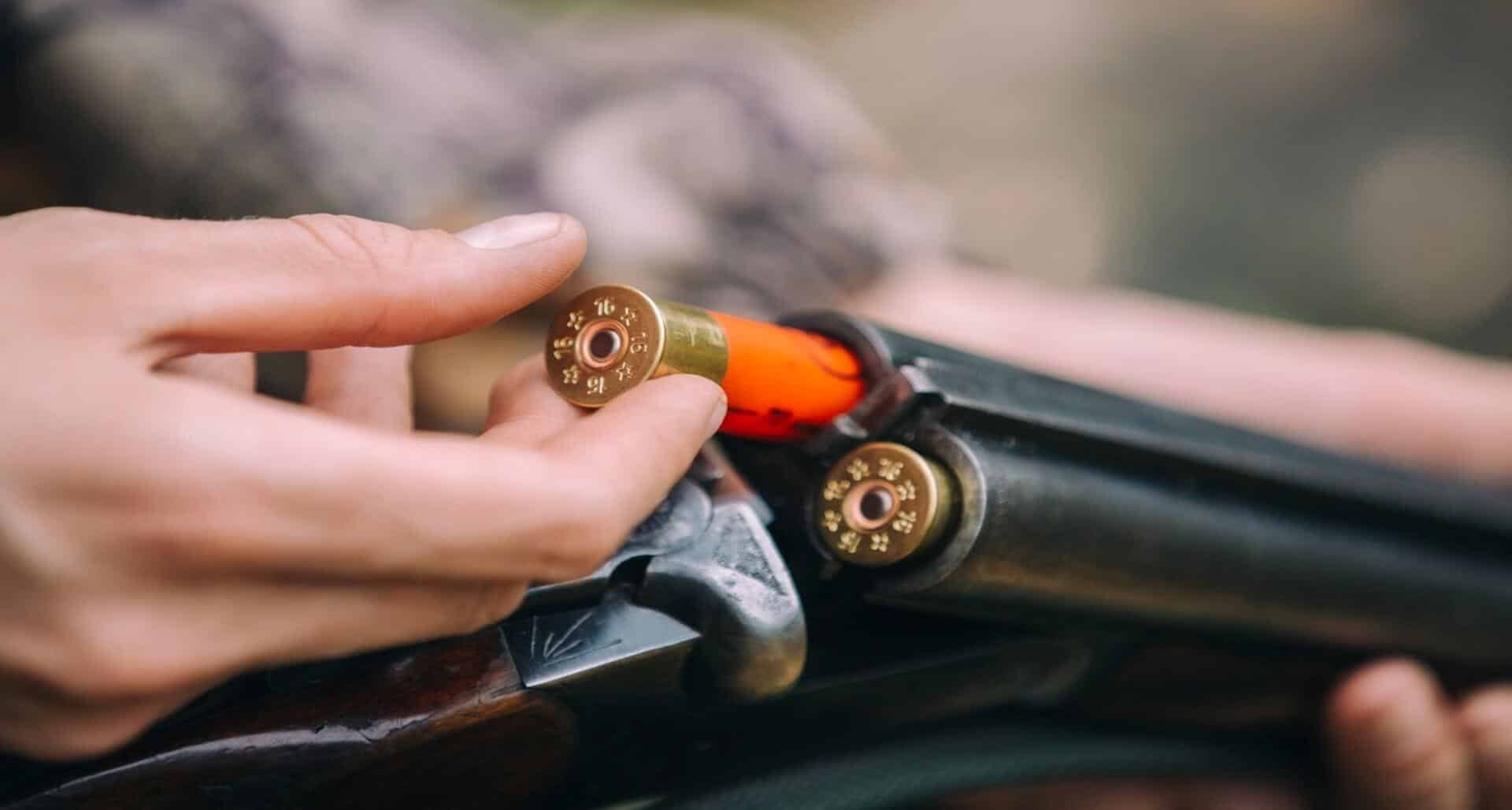
What are the Basic Parts of Ammunition?
What is an Ammo Cartridge?
A complete round, bullet, shell, ammo, cap, pill, slug, and other terms you hear commonly for the word cartridge – A piece of ammunition that you load into a gun and fire at a target. In all honesty, the word cartridge is a little misleading because you don’t fire the cartridge at your target, you fire the bullet and without some of the other pieces that make up a “round” of ammunition, not much would happen. This blog focuses on what an ammo cartridge is and its parts. We also go a little into what each part does and the role it plays in how a firearm projectile works.
The Basic Parts of Ammunition
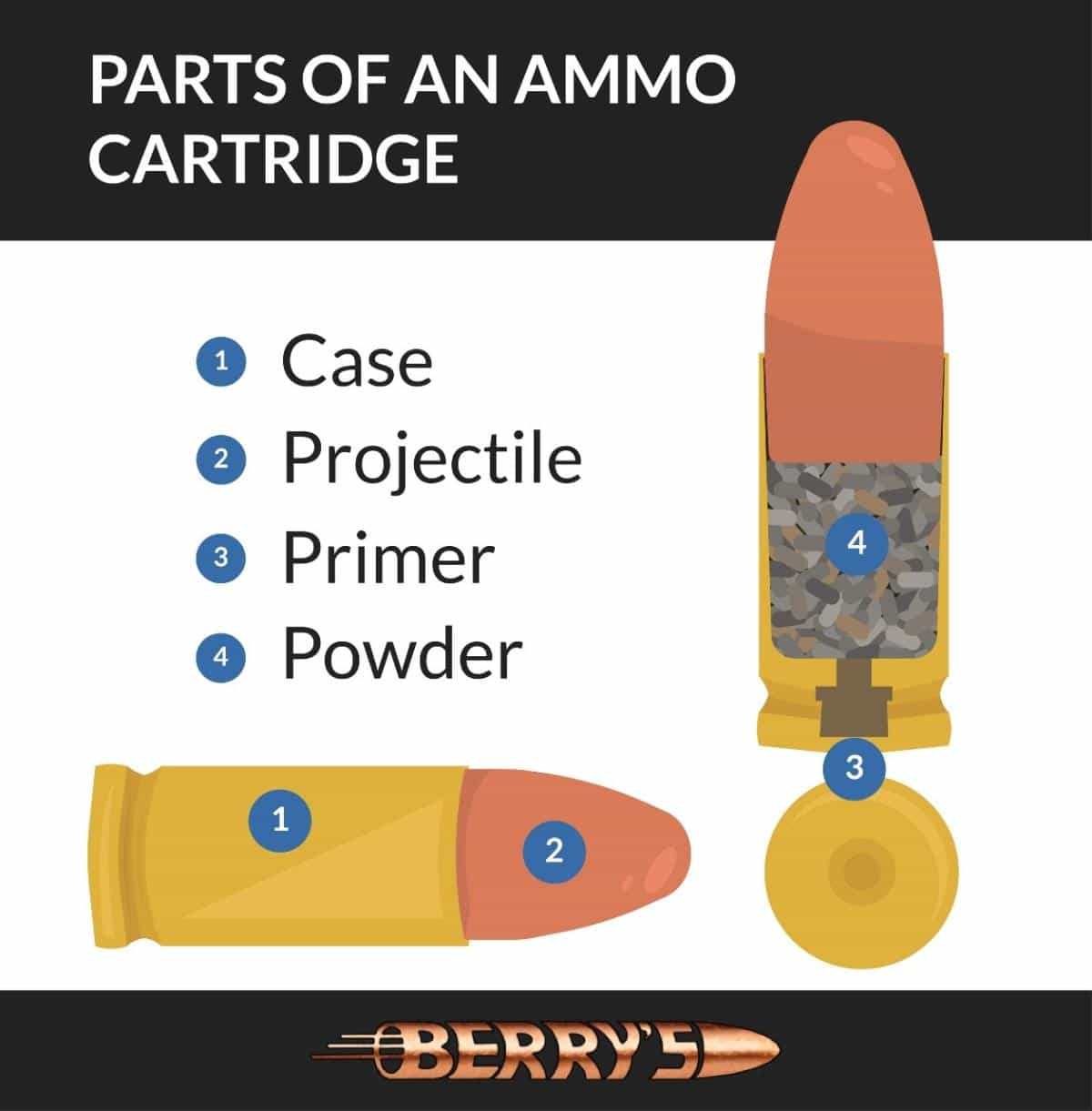
A complete round has four different components. Each is necessary for the round to work and more important for it to work as designed. Those four basic parts are the:
- Casing – The casing is the part of the ammunition that you see on the outside. It ranges from where the bullet is to the top where the firing pin is found. It contains a pressure area that houses the firing pin, but the pin itself is not necessarily part of the casing. The casing is what holds a bullet together until it is fired or disassembled. Inside the casing, you have the primer, gunpowder, and bullet. Casings are manufactured from different materials, such as brass or stainless steel, and in some cases, they are created using polymer plastics. Casings vary from one type of gun to the next and from one type of cartridge to the next, especially for modern cartridge options. A shotgun casing is much different from a casing for a rifle or handgun. We will get more into that deeper into this blog.
- Primer – You would think it is just the spark that sets off the powder that causes the reaction that sends the bullet off on a trajectory. Well, it is, but it is also a physical piece of the ammunition. It consists of three parts – the cup, the ignition compound, and the anvil. When the hammer portion of your firearm strikes the cup, it forces the ignition compound into the anvil where the compound ignites and then sets off the powder. It is this combination that creates the extreme pressure required to propel the projectile out of the case.
- Powder – is the propellant. It is what causes the bullet or pellets inside of ammunition to travel on a trajectory. The first type of powder was black powder but in modern ammunition, the powder may be brown, white, or designed to create a flash. Gunpowder is available in a single base or double base formula. The white powder is also referred to as smokeless powder, but do not let the name fool you, it does produce smoke – about 75 percent less than black powder.
- Projectile – is the bullet. In the case of a shotgun shell, the projectile is pellets. In the case of a handgun or rifle, the projectile is a slug or bullet, such as a hollow point bullet. While many of us refer to a bullet as the entire piece of ammunition, it is in fact, just the portion of the ammunition that travels down the barrel and toward the target. There are many styles of projectiles for firearms, and different sizes of pellets for shotgun shells.
Rimfire vs. Centerfire Ammunition
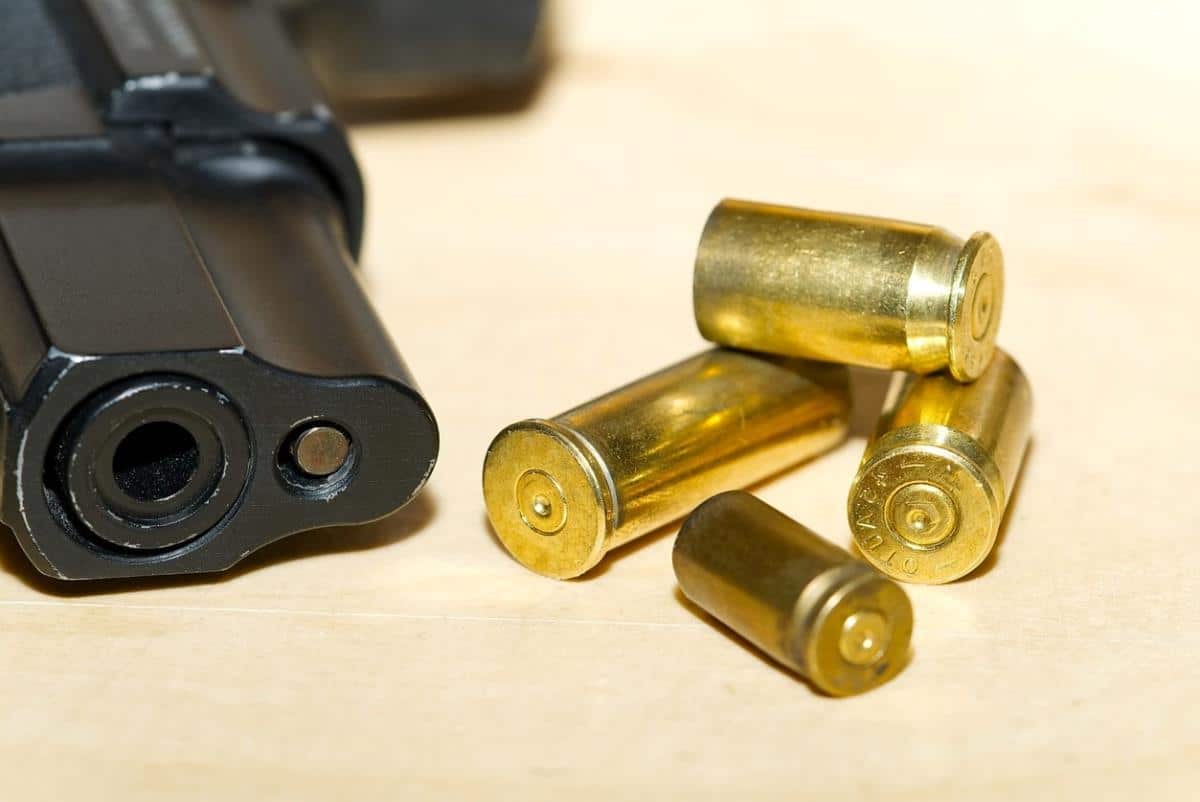
When it comes to modern ammunition there are two types of rounds of ammunition. Those are centerfire or rimfire. Centerfire rounds are designed so that the firing mechanism sits in the flash hole, usually a hammer, strikes the mechanical primer of the round in the center. The primer mechanism is located on the butt-end of the round. If the cartridge (round) is one with a rimfire mechanism, the firing mechanism will strike it on the rim of the round rather than in the center of the round. For that reason, you will need to make sure that you buy and use the correct type of ammunition for your gun – centerfire or rimfire. Not only are a centerfire cartridge and a rimfire cartridge not the same, but, in addition, not all rimfire rounds are the same, and you will need to pay special attention so that you purchase rounds that fit.
Shotgun Shells
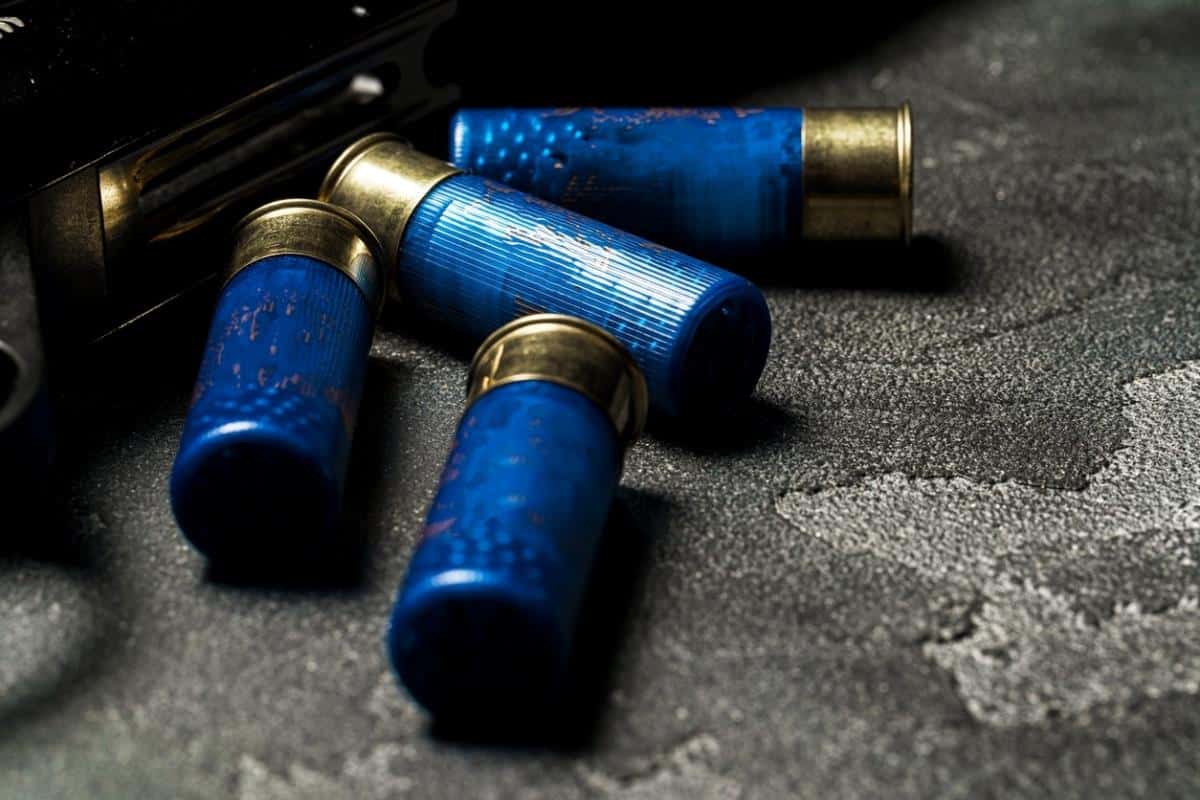
In the case of shotgun ammo, there is an additional component which is the Wad. The Wad sits between the powder and the pellets and keeps the unit together as it fires. Unlike a bullet in a rifle, shotguns shoot pellets and as the shot fires, pressure explodes behind the projectile and forces it down the barrel. With a shotgun, the head would start to melt the pellets and because there are many pellets there is also air. Without the wad, the force created by the powder would seep through the space between the pellets and cause the shot to lose velocity and power.
The Wad is important because it helps to keep the pellets intact, and the plastic casing remains whole, while not causing a drop in velocity or power as the shot develops.
Should you buy your ammunition or reload it yourself?
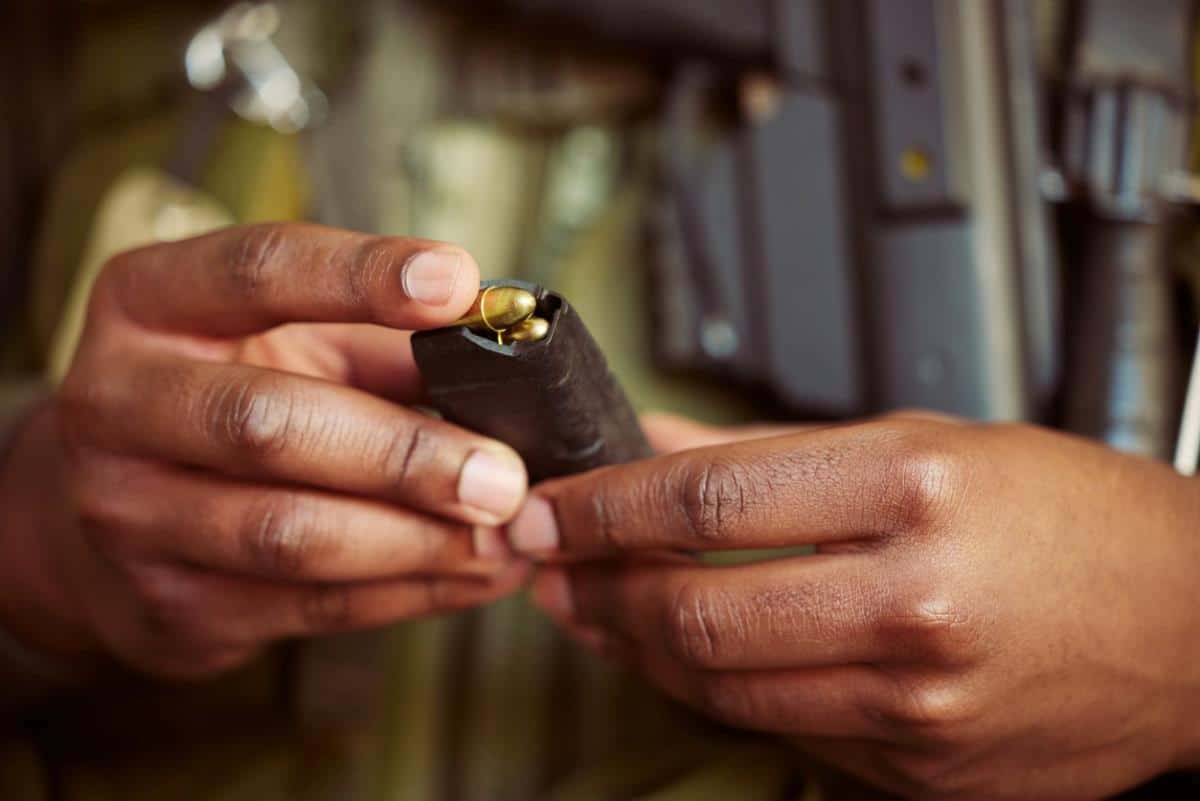
A lot of shooters complain about the rising cost of ammunition, and many prefer to reload their old spent cartridge casings and even shotgun shells. If you have the equipment and the experience, then reloading a cartridge case is not overly difficult.
Start the process by reading a modern ammunition manual that includes the steps and tools needed to safely reload ammunition. We are talking about small explosive devices and the utmost care should always be the tool that you reach for first.
WHAT YOU NEED TO RELOAD AMMUNITION
You will need supplies, which include:
- Casings
- Primer
- Powder
- Projectiles
- Wadding material for Shotgun Shells
Chances are you already have brass casings if you have been shooting your gun and saving the spent casings. You want to inspect spent casing for signs of damage before going through the effort and cost of reloading them. Look to see if there are dents, stress fractures, corrosion, etc. Never use a casing that is damaged. Also, look at the primer and make sure that it is not dented or flattened.
PRIMER
Choose a primer that is created for your firearm. Some guns only shoot black powder, and it would be dangerous to use another type of powder in those guns – Mostly older guns. You also want to make sure that the type of primer or powder you use has an expanding gas configuration that fits your gun. An example would be muzzleloaders vs. modern rifles vs. semiautomatic rifles.
Choosing primers is important too. There are different types of primers which work better with certain types of cartridges – rimfire vs. centerfire. When you choose the best primer for your ammunition, you are ensuring that the chemical and physical properties of the primer will light for a long enough period so that all the powder ignites. A piece of ammunition that does not fully ignite all the powder will have less power, slower trajectory, and do less damage should it make it to the target. A big difference is the primer that you use in rimfire ammunition vs. centerfire ammunition.
PROJECTILES
Some shooters smelt lead and pour their bullets. You can do that if you have molds, and you understand the dangers of working with lead. If you prefer another type of metal or alloy for rounds, you may have to purchase them. The benefit of purchasing parts, such as a full metal jacket round, is that they come machined and ready for use in reloading. Plus, they are machined to fit your firing chamber. In some states, California being one of them, you cannot hunt with lead bullets. If you do not have the means of making your bullets you will need to buy bullets to fit your casing and then continue on the reloading journey. For example, incendiary bullets are often purchased rather than made at home.
If you are looking for reloading bullets, Berry’s has you covered. Our plated bullets are trusted by shooters everywhere. We also offer a variety of reloading supplies to help you at every step of the process.
Some Basic Ammunition Components and Tools needed for Reloading
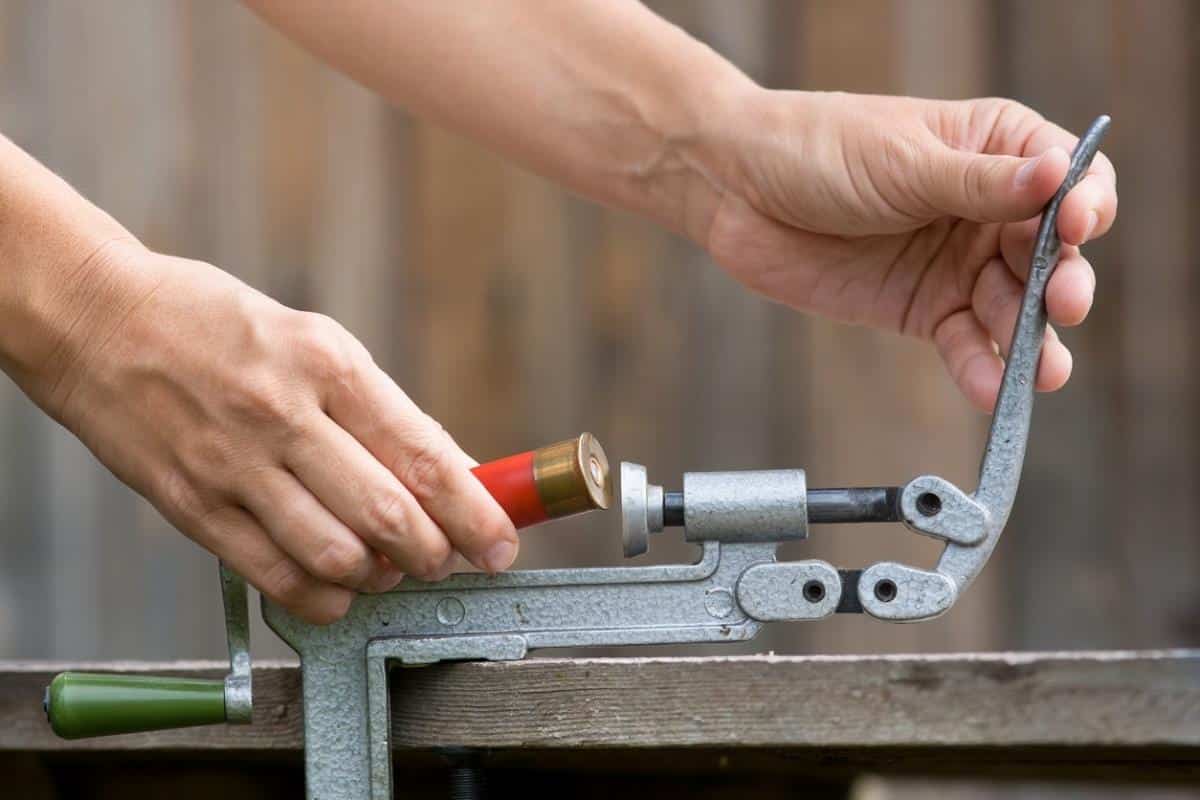
- Reloading Press
- Shell Holder
- Reloading die set in the correct caliber(s)
- Priming Unit and tray
- Priming compound
- Scale for weighing powder
- Powder Trickler and Funnel
- Loading Blocks
- Reloading calipers
- Case Trimmers
- Grinder or deburring tool
It is always a good idea to put safety as the first part of building up the basic components of ammunition, and at the very least wear eye protection. A mask is advisable as well since you are working with hazardous material. The most ideal situation is to have someone who has experience in reloading and that you know and who will work with you while you learn to reload. Sometimes there are classes offered at events or through a gunsmith, etc.
What happens if you don’t know anyone who can teach you? The next best thing is a quality manual with step-by-step guides and explanations that outline the process, cautions, and results. Those are especially helpful for various types of ammunition. Small arms ammunition is different from big bore and specialty rounds.
